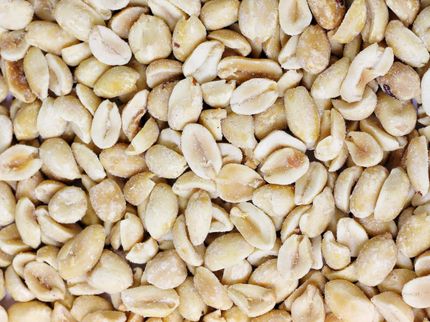3 new trends on the gluten-free food shelf
In recent years, health-conscious consumers have shown an increasing interest in gluten-free products as part of a broader healthy diet in the form of grain-free/low-carbohydrate diets such as Paleo and Keto. For brands and manufacturers, this presents the potential to appeal to a broader audience.

Photo by Andrew Valdivia on Unsplash
With demand for gluten-free foods and beverages on the rise, manufacturers are exploring various alternatives, including flours made from nuts, seeds, beans, fruits and vegetables.
In addition to this development, food scientists are also focusing on improving the nutritional and sensory properties of gluten-free products, as confirmed by recent patent activity.
1. new sources of gluten-free flour
Although few gluten-free options have been available in the past, thanks to recent developments in science and technology, innovators are constantly identifying and producing a variety of ingredients that are naturally gluten-free and can be used as gluten-containing alternatives. Recent launches show just how diverse the choices are.
Grain-Free Original Bagels from Soozy's (USA) are made with a blend of flours (from cassava, almonds, flaxseed), tapioca starch and psyllium husks and are free of gluten, dairy, soy, eggs, peanuts, GMOs and glyphosate residues.
Gü (Germany) brand vegan Free From Strawberry & Rhubarb Cheesecake is based on a vanilla coconut milk cream with strawberry and rhubarb and is made with a flour blend of brown rice, potato and food starch.
2. improved nutritional profiles
The nutritional value of gluten-free foods has been controversial for some time. Studies show that some gluten-free foods have poorer nutritional profiles compared to as conventional counterparts. According to these studies, a gluten-free diet may increase the risk of nutrient deficiencies. Therefore, it is observed in the category that recently introduced foods have additional health benefits.
The Oatmeal Raisin Gluten Free Cookies from Nola's (Indonesia) are made with red and brown rice, oats, chia and flax seeds, and palm sugar, and contain lactic acid bacteria, which is said to help the product support healthy digestion. ().
Ceres (Brazil) yam flour is a gluten-free flour alternative high in beta-carotene, iron, magnesium and a B-vitamin complex, which is said to support the body's defenses and lower cholesterol levels as well as blood pressure.
3. improvement of sensory properties
The main challenge for gluten-free foods is to maintain the same sensory characteristics as products containing gluten. Recent developments in this area have focused on improving those characteristics by incorporating innovative ingredients and processes.
The Protein Maple Muffin Mix from Trader Joe's (USA) made from cassava flour, milk protein isolate and tapioca starch is said to be high in protein and natural flavors.
Organic Coconut Flour from Inari (Canada) is made from the dried, defatted and then finely ground meat of raw, fresh coconuts. The product is gluten-free as well as rich in fiber. It is said to help improve the taste and texture of baked goods.
Note: This article has been translated using a computer system without human intervention. LUMITOS offers these automatic translations to present a wider range of current news. Since this article has been translated with automatic translation, it is possible that it contains errors in vocabulary, syntax or grammar. The original article in German can be found here.
Most read news
Other news from the department business & finance

Get the food & beverage industry in your inbox
By submitting this form you agree that LUMITOS AG will send you the newsletter(s) selected above by email. Your data will not be passed on to third parties. Your data will be stored and processed in accordance with our data protection regulations. LUMITOS may contact you by email for the purpose of advertising or market and opinion surveys. You can revoke your consent at any time without giving reasons to LUMITOS AG, Ernst-Augustin-Str. 2, 12489 Berlin, Germany or by e-mail at revoke@lumitos.com with effect for the future. In addition, each email contains a link to unsubscribe from the corresponding newsletter.






























































